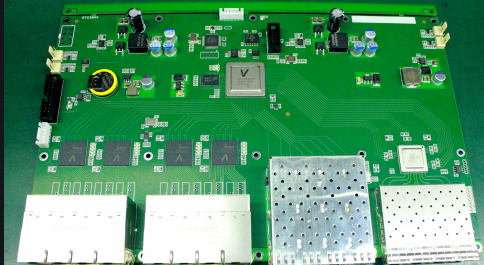At present, the manual visual inspection in the PCB processing process is mainly through the naked eye or with some relatively simple optical magnification instruments, the manual visual inspection of PCB solder paste printing and solder joints, which is a low investment and effective method, for the process For manufacturers with lower requirements and imperfect equipment and testing equipment, manual visual inspection plays an important role in improving the quality of assembled products.
Manual visual inspection includes: manual inspection of printed PCB, manual visual inspection of glue spots, manual visual inspection of solder joints, visual inspection of printed PCB surface quality and so on.
Manual visual inspection is the first thing that needs to be done after solder paste printing, component placement and soldering are completed. The main inspection contents are as follows:
(1) Solder paste printing. First check whether the parameter settings of the solder paste printer are correct, the solder paste of the PCB is printed on the pad, whether the height of the solder paste is the same or presents a "trapezoid" shape, and the edges of the solder paste should not be rounded or collapsed into a pile However, it is allowed to have some peak shapes caused by pulling up a small amount of solder paste when the steel plate is detached. If the solder paste is unevenly distributed, it is necessary to check whether the solder paste on the squeegee is insufficient or unevenly distributed. Need to check the printed steel plate and other parameters. Finally, check whether the solder paste is bright after printing under a microscope.

(2) Placement of components. Before placing the components on the first PCB with solder paste, confirm whether the material rack is properly placed, whether the components are correct, and whether the picking position of the machine is correct before printing. After completing the first PCB, check in detail whether each component is correctly placed and lightly pressed in the center of the solder paste, instead of just being "placed" on top of the solder paste. If you can see a slight depression of the solder paste in the microscope, it means the placement is correct. Whether all the components on the Bill Of Materials (BOM) table are consistent with the components on the PCB, and all components sensitive to the positive and negative poles, such as diodes, tantalum electrolytic capacitors and ICs, the placement of these components Is the direction correct?
Why apply no-clean process in SMT
smt patch processing
1. The waste water discharged after product cleaning during the production process brings pollution to water quality, the earth, and even animals and plants.
2. In addition to water cleaning, organic solvents containing chlorofluorohydrogen (CFC&HCFC) are used for cleaning, which also pollutes and destroys the air and atmosphere.
3. The residue of cleaning agent on the board will cause corrosion, which will seriously affect the quality of the product.
4. Reduce cleaning process operation and machine maintenance costs.
5. No-cleaning can reduce the damage caused by PCBA during moving and cleaning. There are still some components that cannot be cleaned.
6. The flux residue has been controlled and can be used in accordance with the product appearance requirements to avoid the problem of visual inspection of the cleaning status.
7. The residual flux has been continuously improved its electrical performance to avoid leakage of the finished product and cause any damage.
8. The no-clean process has passed many international safety tests, proving that the chemical substances in the flux are stable and non-corrosive.